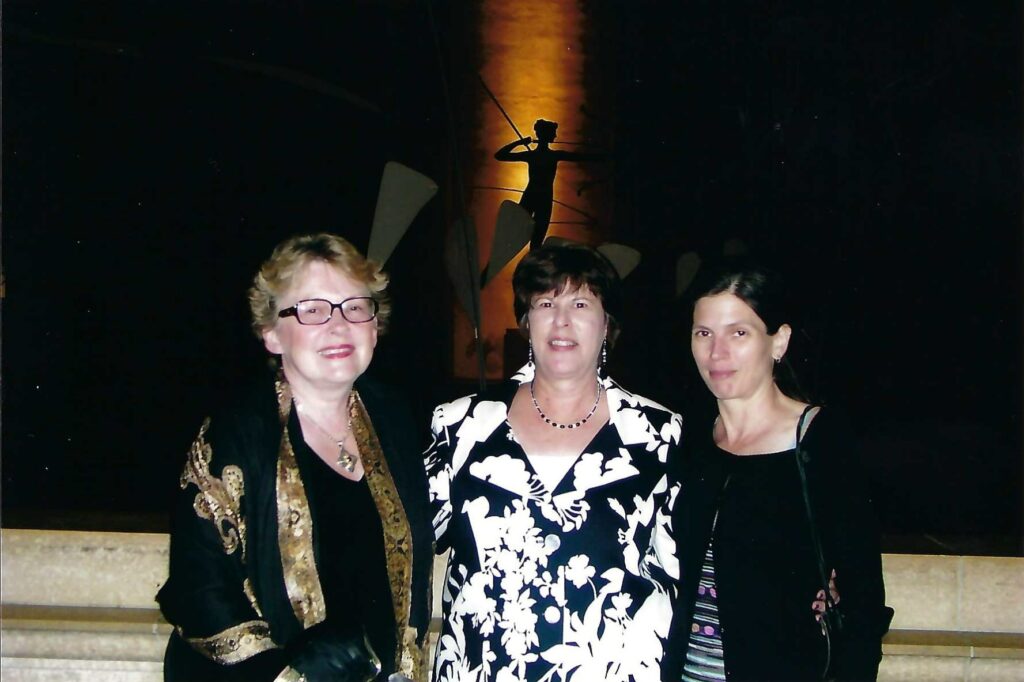THE BOOK
Julien Levy (1906-1981), the art dealer who brought Surrealism to America, owned one of the most influential art galleries in New York City during the 1930s and 1940s. Therefore, it might seem surprising that, aside from his own anecdotal Memoir of an Art Gallery (1977), little has been written about Levy and his place in American art history. In large part, that was because his personal and professional correspondence, as well as the extant records of the Julien Levy Gallery, were scattered among various locales and, thus, were unavailable to scholars. It was only after those documents were reunited, organized, and placed into an art historical context that this story could finally be told. The result is Julien Levy: The Man; His Gallery; His Legacy, a profusely illustrated publication in four volumes.
Volume 1 is a biography divided into four sections. The Pre-Gallery Years discusses Levy’s childhood and adolescence, his years at Harvard, his search for a possible career, his first marriage, his first job in an art gallery, and his decision to open his own gallery in 1931 at the height of the Great Depression. The Gallery Years: An Overview begins with a comprehensive exhibition chronology, followed by a brief description of each show, interspersed with narratives about Levy’s personal and professional life that reveal much about his interests, concerns, challenges, and foibles. The Post-Gallery Years covers his life and activities from mid-1949, when he closed his gallery, until his death in 1981. The Epilogue discusses some of the posthumous events that have now become part of Levy’s legacy.
Volumes 2, 3, and 4 contain the in-depth chapters devoted to the remarkable individuals whose artworks were included in approximately 230 solo and group exhibitions mounted by Levy during the eighteen-year lifespan of his gallery. His overarching goal was to promote the work of living artists, a rarity at the time. Fascinated by the novel and unusual, he showed works in all mediums: painting, drawing, printmaking, collage, sculpture, mobiles, comic strip art, animation celluloids, art films, and his personal favorite—photography. Consequently, his exhibition program was diverse, unpredictable, and inevitably newsworthy. Quotes from reviews by New York City’s leading art critics offer an interesting (and sometimes amusing) perspective on what was then considered aesthetically desirable.
Excerpted communications to and from Levy, his family members, his artists, his adversaries, his psychoanalysts, and his various lovers vividly illuminate those relationships. Among his correspondents were Berenice Abbott, Kirk Askew, A. Everett (Chick) Austin, Alfred Barr Jr., Donald Bear, Eugene Berman, Leonid Berman, Peter Blume, Brassaï, André Breton, Luis Buñuel, Alexander Calder, Massimo Campigli, Henri Cartier-Bresson, Joseph Cornell, Imogen Cunningham, Salvador Dalí, Giorgio de Chirico, Marcel Duchamp, Max Ernst, Walker Evans, Leonor Fini, Alberto Giacometti, Arshile Gorky, Edward James, Philip Johnson, Frida Kahlo, Leon Kelly, Clarence John Laughlin, Rico Lebrun, Mina Loy, Wright Ludington, René Magritte, Man Ray, Lee Miller, Peter Miller, Maud Morgan, Beaumont Newhall, Howard Putzel, Kay Sage, Ben Shahn, Alfred Stieglitz, Ala Story, Paul Strand, Yves Tanguy, Dorothea Tanning, Pavel Tchelitchew, David Travis, Howard Warshaw, and Edward and Brett Weston.
Julien Levy: The Man; His Gallery; His Legacy is a lively “must read” for anyone interested in the evolution of America’s art scene during the twentieth century, as experienced by one of its most visionary and unconventional personalities.
ABOUT THE AUTHORS
Beth Gates Warren holds a bachelor’s degree from the Medill School of Journalism at Northwestern University and a master’s degree in art history from the same institution. In 1975 she joined Sotheby’s Los Angeles auction house; in 1980 she transferred to their New York City headquarters; and in 1985 she was made director of the Photographs Department. In 1995 she left Sotheby’s as a senior vice-president. She subsequently became an independent appraiser, a collections consultant, and the author of three books about photographer Edward Weston.
Marie Difilippantonio holds a bachelor’s degree in history from Mercer University. In 1985 she responded to a classified ad in her local paper seeking an assistant who was proficient in word processing. After preparing a résumé and interviewing with Jean Farley Levy, Marie was offered the position—later learning that it was not her qualifications that earned her the job, but the fact that Jean Levy had consulted astrological charts for all of the applicants and determined that Marie’s was most compatible with her needs. After Jean Levy’s death in 2003, Marie facilitated the auctions of the Levy art collection, books, and ephemera held at Tajan in Paris in 2004 and 2006. She also catalogued and prepared a finding aid for the Levy archival papers before they were gifted to the Philadelphia Museum of Art in 2008.
Ingrid Schaffner, formerly the curator of the Chinati Foundation in Marfa, Texas, has recently joined Hauser & Wirth’s curatorial team as a curatorial senior director based in Los Angeles. Schaffner’s exhibitions and publications related to the history of the Julien Levy Gallery include Deep Storage: Collecting, Storing, and Archiving in Art, Prestel, 1997; Julien Levy: Portrait of an Art Gallery (with Lisa Jacobs), The MIT Press, 1998; Salvador Dalí’s Dream of Venus: The Surrealist Funhouse from the 1939 World’s Fair, Princeton Architectural Press, 2002; the 2004 touring exhibition Accommodations of Desire: Surrealist Works on Paper Collected by Julien Levy; and the introduction to the 2003 Boston Museum of Fine Art’s reprint of Julien Levy’s 1977 autobiography Memoir of an Art Gallery.

Beth Gates Warren, Marie Difilippantonio, and Ingrid Schaffner at the opening of Dreaming in Black and White: Photography at the Julien Levy Gallery, Philadelphia Museum of Art, June 2006.